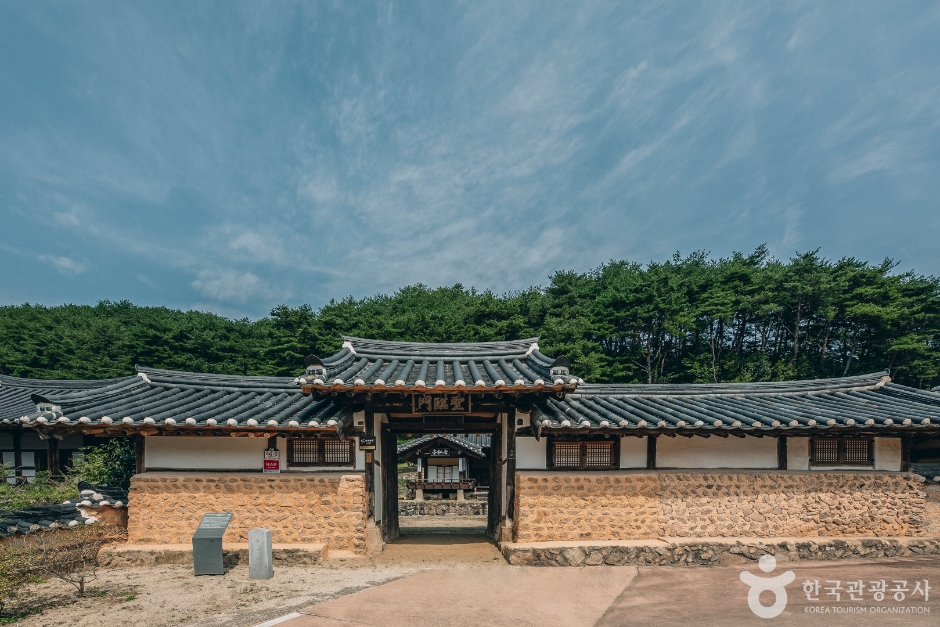Nosongjeong Head House (노송정종택(퇴계생가))
19.9Km 2025-06-17
46-5, Onhyejungma-gil, Andong-si, Gyeongsangbuk-do
Nosongjeong, also called the “Placenta Chamber of Yi Hwang” (pen-name: Toegye, 1501-1570), is named after the pen-name ‘Nosong’ of Yi Hwang’s grandfather Yi Gye-yang. It is said that Yi Gye-yang abandoned his government position after he fell victim to the Gyeyujeongnan Suppression (a coup d’état instigated by Suyang Prince, who became King Sejo of Joseon, in 1455) and returned to his hometown in Bonghwa, where he devoted himself to teaching students. He built the house in its current location by a coincidence of saving a monk. The Placenta Chamber of Yi Hwang, which is situated deep in the house, consists of an Ondol (Korean floor heating) Room and a small numaru (upper floor) with a unique design. The gate bears a signboard with the word ‘Seonglimmun’ written by Hakbong Kim Seong-il (a direct disciple of Yi Hwang), which derives from the fact that the mother of Yi Hwang, Chuncheon Park, had a conception dream about Confucius entering the main gate with his disciples. Nosongjeong has an Ondol room in the west, with a numaru and a maru (wooden floor) in the east, which could accommodate 20 to 30 students. The signboard of Noseongjeong is believed to have been written by Han Seok-bong (a leading calligrapher of the mid-Joseon period). The structure of Nosongjeong is considered an invaluable resource for studies on the principles of building a half-hipped roof. The shrine is situated east of Nosongjeong, between which there was a juniper aged over 400 years from which the name of Nosongjeong was originated as people called the juniper as an old (no) pine (song). However, the original juniper has been replaced by its younger juniper tree with an umbrella shape of the top.

 Español
Español
 한국어
한국어 English
English 日本語
日本語 中文(简体)
中文(简体) Deutsch
Deutsch Français
Français Русский
Русский